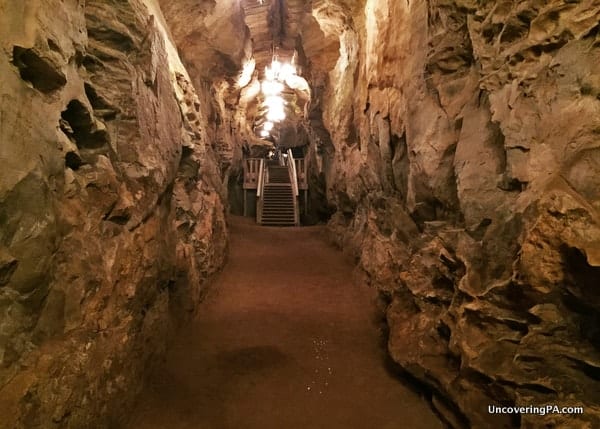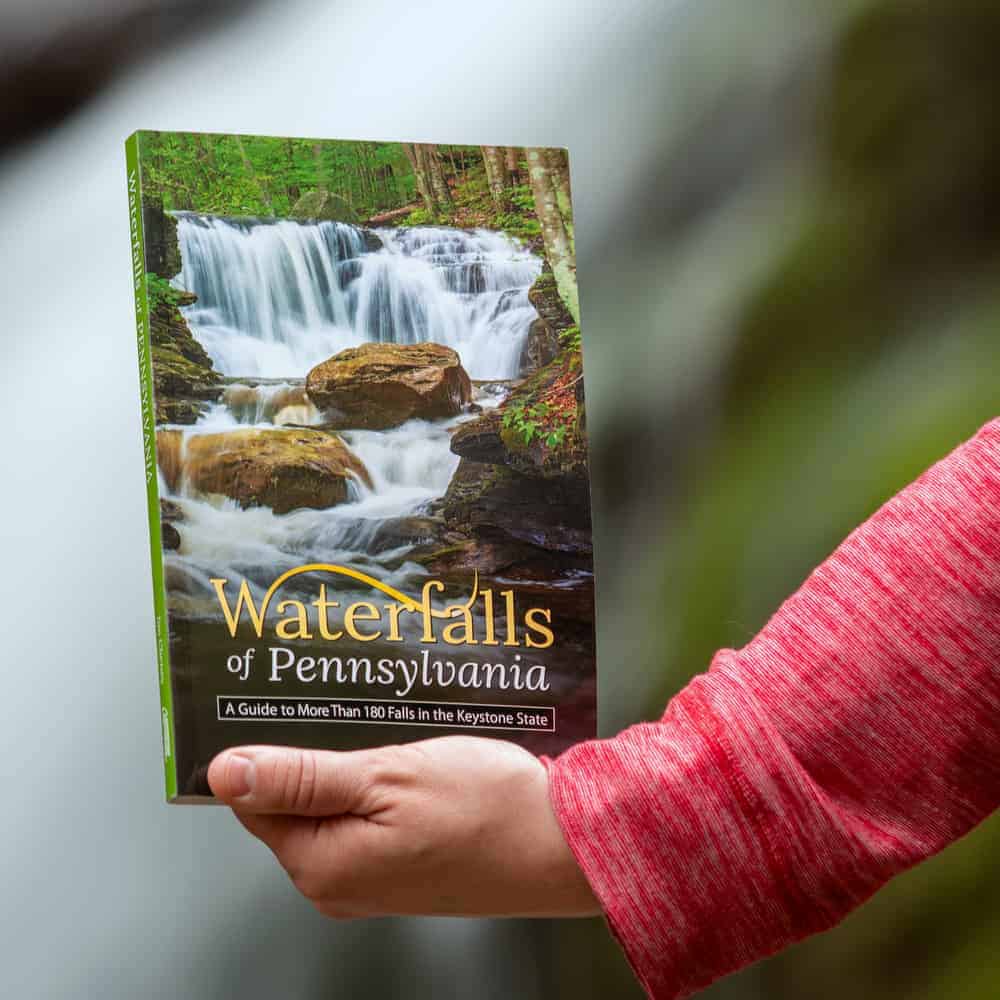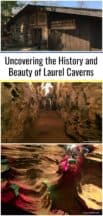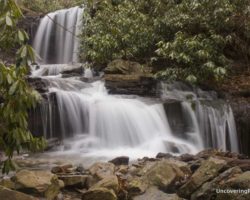I’ve visited many different caves in Pennsylvania and the world, and after a while, they all tend to look a bit the same. So, while I knew Laurel Caverns in the Laurel Highlands would be beautiful and interesting, I figured it would be rather similar to the other caves I had visited in the past. Fortunately, I was wrong.
Laurel Caverns is located along Chestnut Ridge, not too far away from the Summit Inn, Ohiopyle State Park, and the Great Cross of Christ. The forested setting in the middle of Forbes State Forest, which is also home to the Quebec Run Wild Area and the highest point in PA, gives the area a peacefulness that you don’t see at many other caves in Pennsylvania.
As Pennsylvania’s largest cave and one of the largest private caves in the country, Laurel Caverns is special because of its size. In addition, its geological makeup and unique activities make it definitely worth visiting.
A Brief History of Laurel Caverns

The first non-Native Americans to discover the cave did so in the mid-18th century. However, Native Americans clearly knew about the cave before then, and may have even entered it from time to time, as arrowheads have been found around a sinkhole that was the original entrance to the cave.
The first owner of the cave was Richard Freeman, who acquired the land in 1794, and, by 1798, the cave was mentioned for the first time in a newspaper. In 1814, John Delaney purchased the land around the cave, and while an 1816 geologic survey named the cave “Laurel Hill Cave,” the name “Delaney’s Cave” is what ultimately stuck.
The land changed hands several times over the coming years, but there was no official oversight of the cave. This didn’t stop local hotels from offering tours and people from showing up and checking it out for themselves as the cave became more and more famous.
In 1937, the Cale family purchased all of the land around the cave to preserve it from limestone quarrying. Despite regular discussions about opening the cave up for tours, it wasn’t until 1964 that the work was done to make it into a show cave.

By that time, the name had been changed to Laurel Caverns, an approximation of the original name from 1816. And, while they haven’t always owned the cave, the Cale family has been running Laurel Caverns ever since.
Visiting the Laurel Caverns
Laurel Caverns offers several different options for visiting the caves. In addition to the standard guided tour, visitors can also go rappelling or spelunking inside the caverns. In fact, Laurel Caverns is one of the few show caves that also offers spelunking.

Two spelunking tours are offered that cover two different parts of the cave. While the trips are guided, visitors go much deeper into the cave than on a traditional tour and traverse areas that have no power and very few visitors.

"Waterfalls of Pennsylvania" by Jim Cheney
If you love PA waterfalls, you won't want to miss this waterfall book from Jim Cheney, author of Uncovering PA, featuring more than 180 great waterfalls. Order it now on Bookshop.org or Amazon.
Unfortunately, because I was traveling with a small child, spelunking wasn’t an option, so I opted for a traditional tour of the caverns.
The Traditional Guided Tours of Laurel Caverns last about an hour and take you through some very impressive parts of the cave, and even include a cheesy sounding, but surprisingly cool, light show.

What makes Laurel Caverns so different from other caves in Pennsylvania is its lack of geological formations. Because the caverns have a lower calcium content, the passage walls are very smooth, and there are few stalagmites and stalactites in the cave.
In fact, it almost reminded me more of a mine or a dry creek bed than a traditional cavern, though it did bear some resemblance to Woodward Cave in Centre County. However, this lack of traditional formations makes the cave much more unique, and it’s interesting to find out how this cave was created.
Throughout the cave, you can see a fault line above you from where the cavern was created by shifting earth. There are also columns in the cave that were created when the water that used to run through the cave rushed through passages and took away the looser soil, leaving behind only the hard rock formations visible today.

The cave’s formations also create some passages that are deceptively steep. One of the more interesting parts of the cave is the gravity-defying optical illusion where it appears a ball is rolling uphill!
Throughout the cave, colored lights highlight various aspects of the cave. Near the end of the tour, the guide runs through a light show that gives you the chance to not only experience the pitch black of the cave but also showcases the cave in a unique way.
Back inside the visitors center, make sure you don’t miss the impressive view from the back deck. It is said that on a clear day, you can see five counties from here and even the skyline of downtown Pittsburgh!

Overall, I was really glad that I was invited to visit Laurel Caverns. Even if you’ve been to many other caves in Pennsylvania, this one is worth seeing and will give you the chance to see something a bit different than you’ll find at other caves around the state.
And, I know I can’t wait to go back again to explore the depths of Laurel Caverns on a spelunking trip!
Note: My visit was hosted by Laurel Caverns. However, the opinions expressed are my own.




 "
"




The mini golf there is great too – it’s fun, but it’s also designed as an accessible replica of a cave for those that can’t make the regular tour due to mobility issues.
I am interested in learning about new and interesting places to visit.
I did the spelunking tour with a friend and a guide about 10 years ago now… it was pretty exhausting and quite a few dangerous spots. I’m glad I experienced it but that was the first and last time.
As a child back in the 1940s we used to play in the cave known then as Delaneys cave. Sledding was great on the summit mountain when it snowed. The highway was 3 lanes then, middle suicide lane with truck runoffs going down. There are bears in the mountain so you have to be careful exploring. At the bottom of the mountain is a town called Hopwood which had many runaway trucks plow thru houses and one diner. There was also a store with monkeys caged up on the outside.
Poor monkeys!